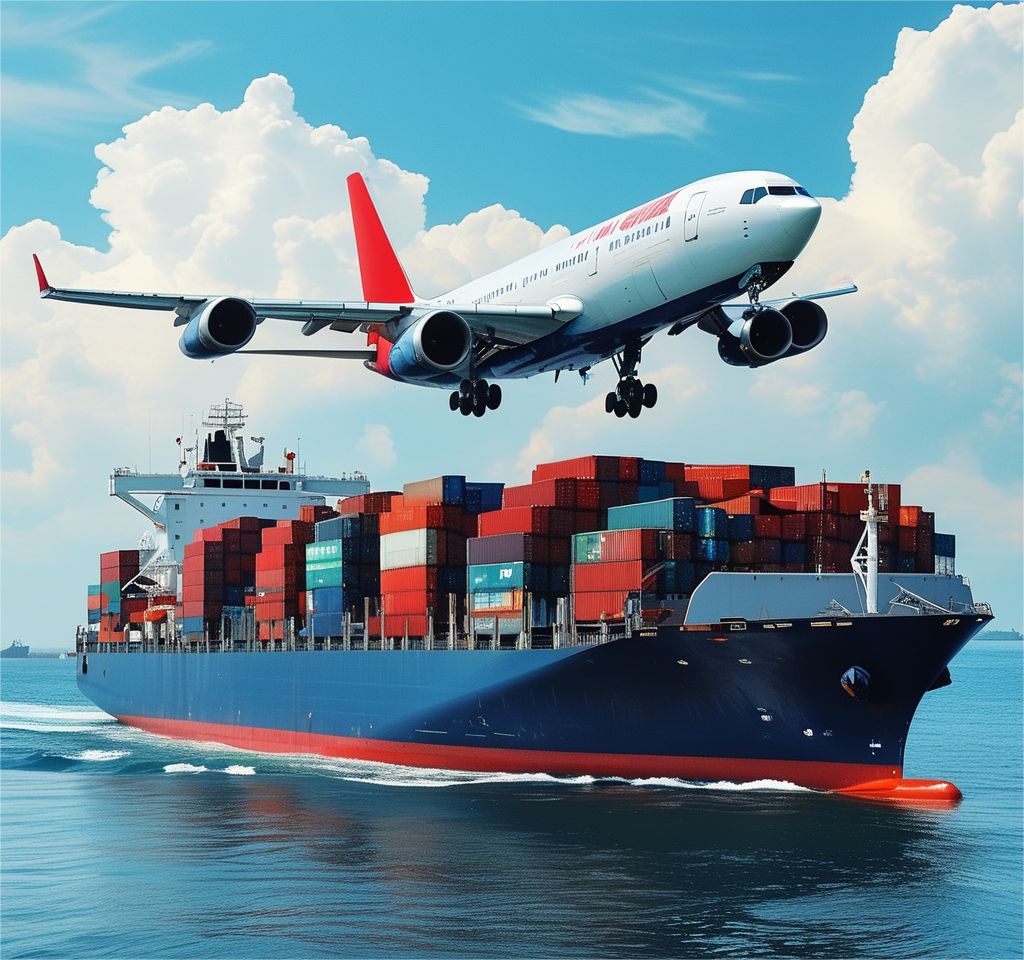Choosing between air vs ocean freight is one of the most important logistics decisions for importers, exporters, and supply chain managers. Each method offers unique benefits—air transport prioritizes speed and reliability, while sea shipping focuses on cost efficiency and capacity. Your choice can influence delivery times, budgets, and customer satisfaction, so understanding the differences is essential for smarter shipping decisions.
1. What Is Air Freight?
Air freight refers to moving goods via dedicated cargo aircraft or in the hold of passenger flights. It’s the fastest option for international shipping, with most deliveries completed in under a week.
- Advantages: Rapid transit, high security, and precise scheduling.
- Limitations: Expensive compared to sea transport, strict size/weight limits, and environmental concerns due to higher emissions.
- Typical Uses: High-value electronics, urgent spare parts, pharmaceuticals, fashion launches, and fresh produce.
2. What Is Ocean Freight?
Within the air vs ocean freight comparison, ocean freight moves goods in containers aboard large vessels. It remains the backbone of world trade, accounting for over 80% of global cargo volume.
- Advantages: Lowest cost per unit, massive capacity, and ability to handle oversized or heavy items.
- Limitations: Longer transit times (20–45 days on average), potential weather and port delays, and slower customs processing.
- Typical Uses: Automobiles, industrial machinery, raw materials, furniture, and bulk consumer goods.

3. Key Differences at a Glance
| Factor | Air Freight | Ocean Freight |
|---|---|---|
| Transit Time | 🟢3–7 days | 🔴20–45 days |
| Best For | Urgent, light, high-value items | Bulk, heavy, low-cost cargo |
| Pricing | Charged by weight/volume | Charged per container (FCL/LCL) |
| Reliability | Highly punctual | More affected by delays |
| Eco Impact | Higher carbon footprint | Lower emissions per ton |
4. Shipping Time, Conditions, and Terms
| Mode | Transit Time | Key Conditions | Common Incoterms |
|---|---|---|---|
| Air Freight | 3–7 days | Strict weight/size rules, higher insurance, precise documentation | DDP, CIF, DAP |
| Ocean Freight | 20–45 days | Weather-sensitive, may face port congestion, suitable for all cargo types | FOB,DDP, CFR, |
5. Cost Considerations
When evaluating air vs ocean freight, cost is one of the most influential factors. The difference can be dramatic—sometimes up to 10× more for air transport on the same route.
- Air Freight: Charged by the greater of actual or volumetric weight. Fuel surcharges, airport handling fees, and security checks add to costs.
- Ocean Freight: Priced per container (FCL) or per cubic meter for shared loads (LCL). Extra fees may include terminal handling and port storage.
- Example: A 200 kg shipment from Shanghai to Los Angeles might cost $1,200 by air but only $300 by sea, with a 4–6 week longer delivery time.
📌Tip: Many companies split shipments—sending urgent items by air and bulk stock by sea to balance speed and cost.
6. Cargo Suitability
The nature of your shipment often determines the best transport mode.
🟢Ideal for Air Freight:
- High-value electronics like laptops or semiconductors.
- Urgent spare parts for manufacturing equipment.
- Fashion goods with short selling seasons.
- Perishable goods like seafood or flowers.
🟢Ideal for Ocean Freight:
- Heavy machinery and industrial equipment.
- Raw materials such as steel, timber, or cement.
- Vehicles, furniture, and building materials.
📌Example: Shipping 100 dining tables by air could cost tens of thousands, while ocean freight would be a fraction of the cost.

7. Environmental Considerations
The air vs ocean freight debate also involves sustainability concerns.
- Air Freight: Has a much larger carbon footprint per ton due to high fuel consumption.
- Ocean Freight: Emits significantly less CO₂ per ton, making it a greener choice. Shipping lines are adopting cleaner fuels and slow-steaming to further cut emissions.
📌Trend: Some businesses combine sea shipping with short-haul air transport to balance sustainability with delivery speed.
8. Tracking and Reliability
Tracking and reliability vary significantly in air vs ocean freight.
- Air Freight: Operates on fixed airline schedules with fewer delays. Real-time GPS updates and faster customs clearance improve reliability.
- Ocean Freight: Now offers digital container tracking, but delays can occur from port congestion, weather, or customs inspections.
📌Tip: A reliable freight forwarder can proactively manage risks and arrange alternatives if delays occur.
9. Choosing the Right Mode
The decision should be based on urgency, cost, cargo type, and environmental goals.
- Deadlines are tight and late arrival would cause losses.
- The cargo is small, light, and high-value.
- You need maximum schedule reliability.
- Shipments are planned well in advance.
- Cargo is large, heavy, or low-value per unit.
- You’re prioritizing lower transport costs and greener shipping.
Hybrid Strategy: Many companies mix both—flying urgent goods and sending bulk replenishments by sea.
10.Conclusion
Both shipping methods are vital in global trade. Air transport offers unmatched speed, while ocean shipping delivers unbeatable cost efficiency and capacity. The smartest logistics strategies often combine both, ensuring products reach markets quickly without overspending.
Request a Quote
Need a tailored solution for your shipping from China?
Let TJ China Freight Forwarder assist you with reliable, cost-effective service.
FAQ:
Q1. How do Incoterms affect my choice?
Incoterms like FOB, CIF, and DDP define who pays for shipping, insurance, and customs fees, influencing whether air or sea is more cost-effective for you.
Q2.Are customs clearance times different?
Air shipments often clear customs faster due to smaller volumes, while sea cargo can take longer at busy ports.
Q3.Which option is more environmentally friendly?
Ocean freight produces fewer CO₂ emissions per ton and is the greener choice when timelines allow.
Q4. Can I combine both shipping methods for one order?
Yes. Many businesses send urgent portions by air and the rest by sea to balance speed and cost.
Q5. Is insurance different for air and ocean freight?
Yes. Air freight usually carries higher insurance rates due to its higher shipment value and faster delivery expectations.
